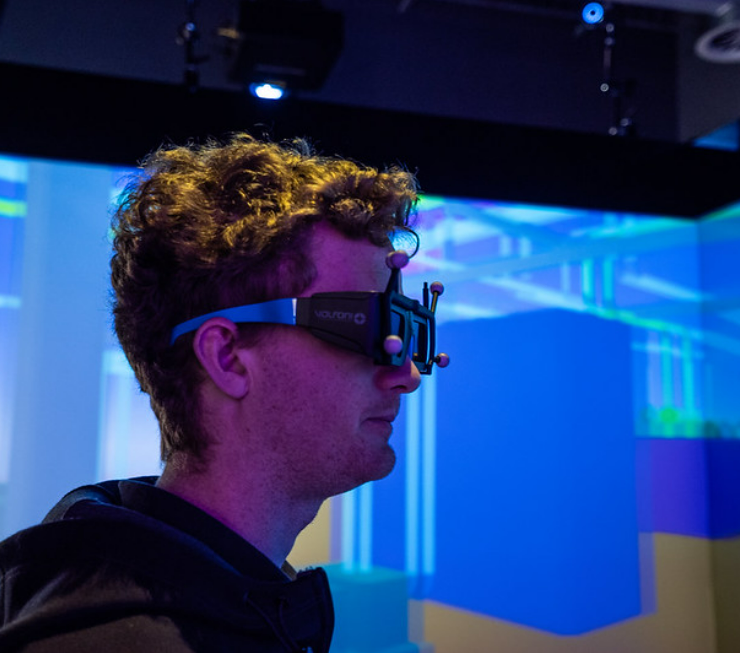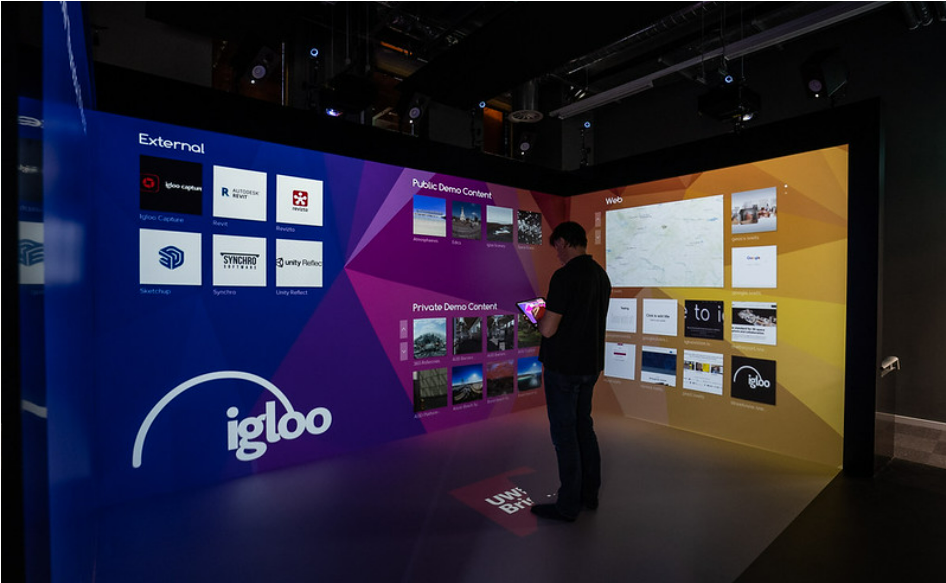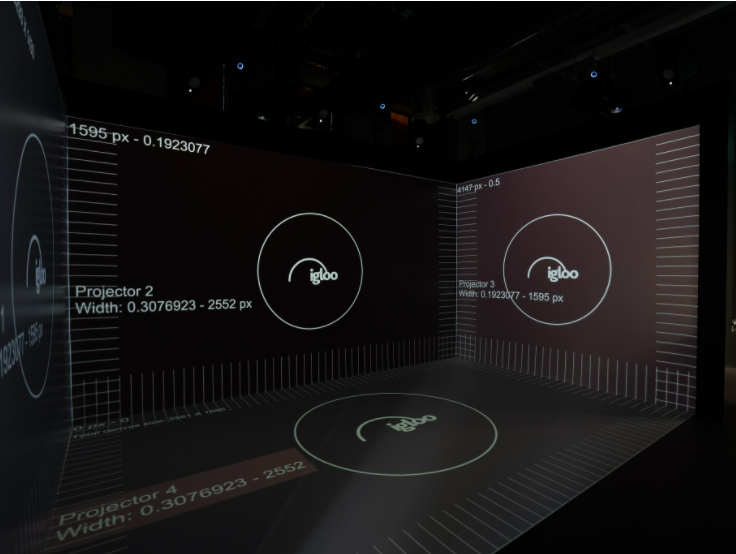But first – what exactly is a CAVE?
The CAVE, originally, was a product of the 1990s academic community. And it was put together by idealistically-minded academics who wanted to deliver the most realistic possible experience using the best possible components.
The word CAVE itself is an acronym for Cave Automatic Virtual Environment. It’s also a clever reference to the allegory of Plato’s Cave (which explores the nature of perception, reality, and illusion).
Typically they:
- Are cube-shaped
- Use extremely high-resolution projectors
- Have projection on the walls, floor, and ceiling
- Use rear-projection on the walls
- Feature head-tracking and 3D glasses for the main user and 3D glasses for anyone else
Given their heritage, CAVEs have tended to be complex, costly, inflexible systems. Typically they run from clusters of servers, with one GPU per projector, and patch-in multiple other components. Consequently, the workflows tend to be complex and they have very specific use cases.








